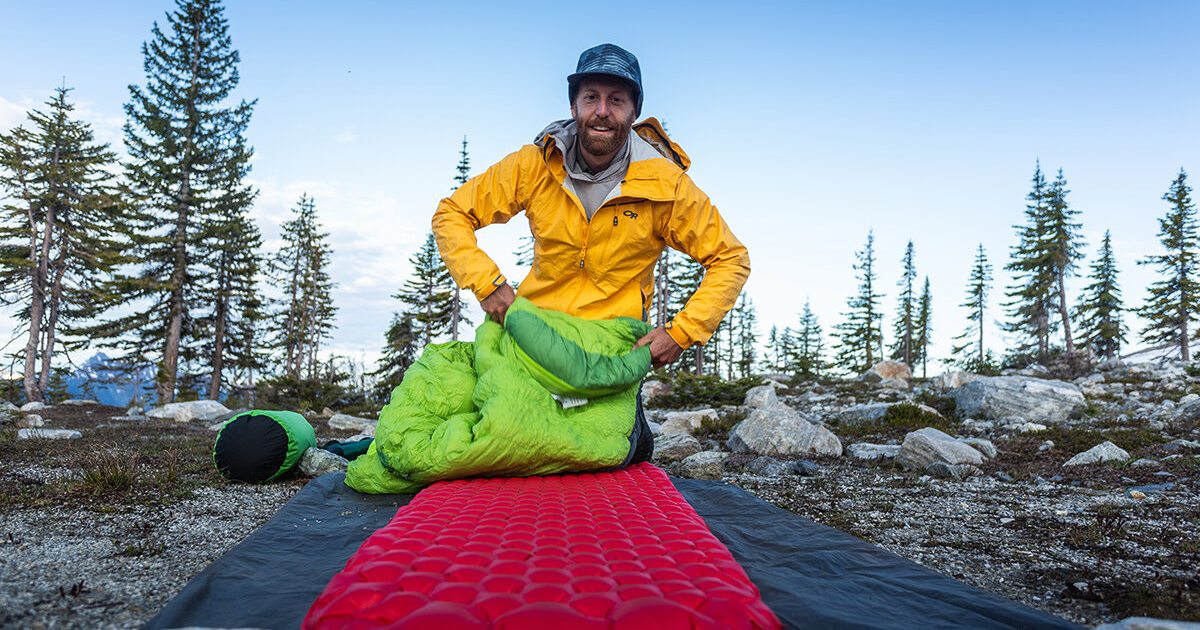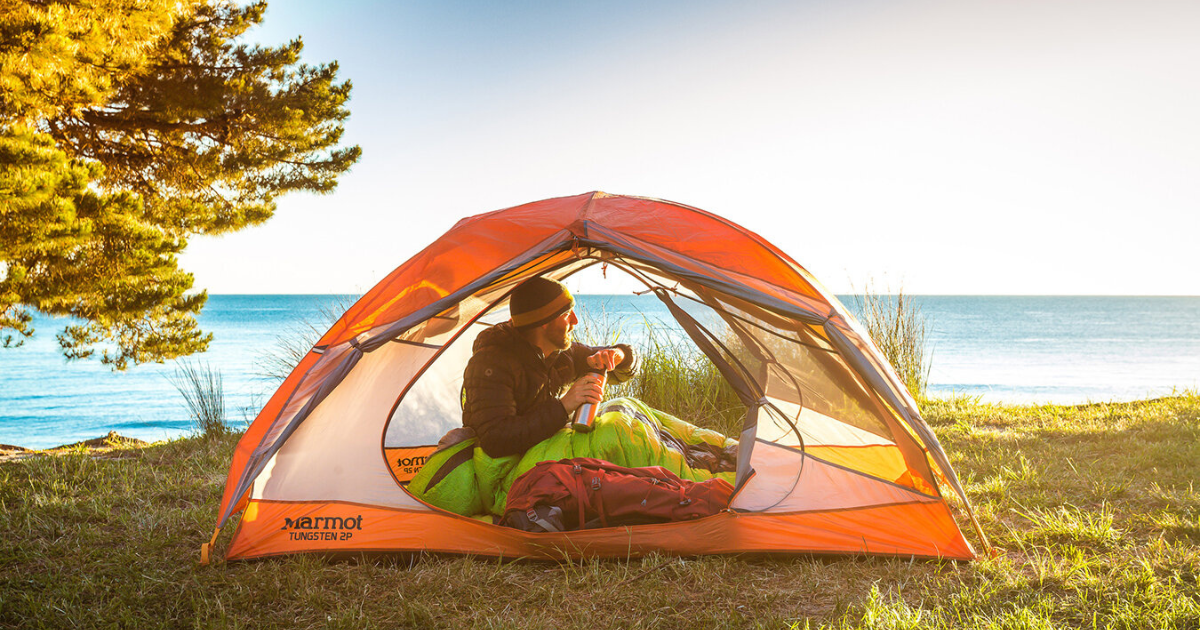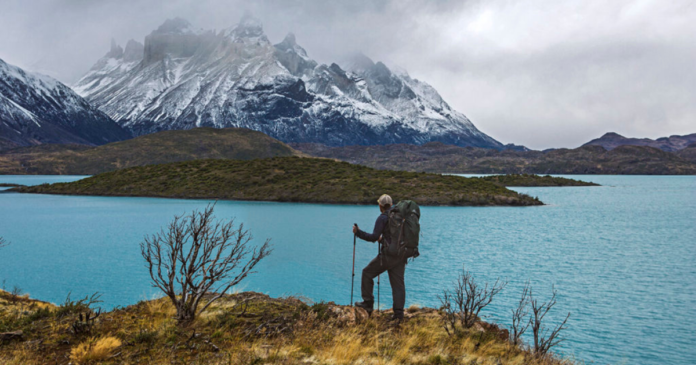Backpacking can be a bit overwhelming if you are just getting started. Between all the gear options out there, to surviving in the wilderness, to handling your business when nature calls, there's a lot to think about.
I'm here to simplify it for you.
First, backpacking doesn’t have to be a sufferfest. It's entirely possible to enjoy your experience and be comfortable in the wild.
So let's get started:
Choosing Your Gear:
About Backpacks:
Your backpack is one of the main building blocks in backpacking, duh.
The most important elements of a backpack are fit, comfort, and durability. I’d rank getting a pack that fits YOU as priority number one. If you are comfortable on the trail, you will enjoy yourself quite a bit more than if your pack is causing you problems.
There are two ways to talk about size for a backpack; capacity (i.e. 55 liters, 65 liters, etc) and frame size (i.e. small, medium, large).
For capacity, I recommend a 50-65 liter pack. To me, that’s the sweet spot for almost everyone. Don’t make the mistake of buying the largest pack ever (like I did, my first pack was a whopping 135 liter monster). Bigger is not better.
For frame size, I recommend going into a store, such as REI or a local shop, and getting your torso measured. This is important because it’s not always super intuitive, you can be 6 foot 3, and need a medium pack because your torso is a certain length.
It’s common for backpack size to be different than what shirt size you wear.
Make sure you get your torso measured before you buy your first pack.
Here’s a video that breaks it all down.
About Your Sleep System (sleeping bags and sleeping pads):
Sleeping bags are many people’s favorite items. There’s nothing better than crawling into a great sleeping bag on a chilly night and sleeping soundly all night long.
Here’s how to make a good decision on what sleeping bag to purchase. Generally speaking, I recommend a down sleeping bag that’s rated to around 15 degrees F (this is a traditional 3-season sleeping bag). It’s meant to be appropriate Spring through Fall, but not be appropriate for winter conditions.

Down or Synthetic Sleeping Bag?
Let’s keep this simple: Down bags are more expensive than synthetic bags. They are significantly lighter and pack down MUCH smaller. The downside (hehe) is that if they get wet, they won’t keep you warm. Down feathers clump together when wet and lose their ability to insulate. So you’ll be cold in a down sleeping bag that is wet.
Synthetic bags, on the other hand, maintain the ability to keep you warm, even when wet. Synthetic bags are much cheaper but do not pack down well and are generally heavier.
Synthetic bags are solid options if budget is a big concern, or if the majority of your camping is car-based camping (and you don’t have to pack or carry your sleeping bag in a pack).
There’s more I could say on sleeping bags, which I do here in this video!
Sleeping Pads and Mattresses are the single most overlooked / underrated item for new backpackers. And it makes a bigger difference in your camp experience than anything else you buy.
Seriously, it’s not hyperbole. If you go top-o-the-line on anything, let it be your sleeping mattress.
A pad is just that, a lightweight foam material that insulates you from the ground. They are simple, durable, and lightweight (and they will never pop), so they have their place.
The biggest mistake I see new backpackers make is overlooking the importance of what they sleep upon. Most people buy the cheapest sleeping pad when they are getting gear for the first time. But sleeping pads are not made for utility and not comfort. Your sleep quality will be diminished.
I used a cheap sleeping pad for the first ten years of my camping life. When I switched to a sleeping mattress, it revolutionized my world! I’m not kidding. I had no idea I could sleep so well while camping.
Air mattresses insulate you from the cold ground far better than foam. You will be much warmer with the better insulation from the ground. The increase in softness will also keep your limbs from going numb in the middle of the night.
About Tents and Shelters:
This is about to get in-tents!
When you start shopping for tents, they can all look relatively equal. Price usually does a pretty good job of indicating the quality of materials used. Cheaper tents ($100-200 range) will be heavier, won’t pack down as small, and are more likely to break down with use. A common problem with cheap tents is not being resilient to water(aka leaky), having tent poles break, or getting rips in the fabric.
The biggest difference in price often correlates to weight. Ultralight tents are expensive but weigh less than three pounds (really nice ones are under two pounds). Mid-range tents generally weigh 4-6 pounds. Budget tents often weigh more than six pounds, which is very heavy!
Size: In general, most people will want to use a two-person tent. You can easily carry a two-person tent by yourself. If you are sleeping solo, you’ve got plenty of space inside the tent for all your gear. If you have two occupants, you can comfortably sleep shoulder to shoulder, but with no space inside the actual tent for your gear. Typically there will be room in the vestibule for gear (under the rain fly, but outside the tent).

You should get a one-person tent if: you are exclusively a solo hiker or are setting out to do a distance trail (such as the Appalachian Trail or Pacific Crest Trail) and weight is a primary concern.
You should get a two-person tent if: You are a general backpacker. You might go by yourself or with a partner or a dog. This is the most common tent size to purchase.
You should get a three-person tent if: You are going backpacking with a parter + a child or dog.
Other options: Shelters can be as simple as a tarp from Home Depot that you string up between two trees. Tarp-style shelters are surprisingly effective, and are a great option for people who want an economical, lightweight shelter. These are best suited to ultralight hikers and thru-hikers (people hiking long distance trails).
Wanna see it in action? Here’s the Home Depot option.
About Stoves and Meal Prepping:
For new backpackers, don’t overthink this category. Keep it simple.
Small stoves that run off butane canisters hit all three important factors: small, cheap, and effective.
Stove/pot systems like JetBoil, are great too. They are super-efficient at, well, boiling water. This makes them excellent for people who primarily use dehyrated backpacking meals.
If you are going to spend a lot of time camping, I recommend a liquid fuel-based stove such as the Whisperlite. They can be cleaned and maintained in the field and reduce trash because you refill the fuel tank. These are generally a little bulkier, and can be a bit more intimidating to operate because you are using liquid fuel. Best suited for guides, not beginning backpackers.
POOP:
When you are out in nature, nature will call. So what do you do?
Some people just hold it until they return to their porcelain throne back home. Some people just poop right onto the ground, and then leave it (and the used toilet paper) behind, for the rest of the world to have to deal with. For the love of everything holy, please don’t do that.
-
Get a trowel.
-
Go two hundred feet from water, the trail, camp, and high traffic areas.
-
Dig a cat-hole about 8 inches deep.
-
Lower your pants to your thighs (not your ankles).
-
Squat. Rest the back of your thighs on your ankles, like a catcher in baseball. Your pants are out of the way (if you lowered your pants to your thighs).
-
Relax. Take in the views and do the doo’s.
-
Fill in the cat-hole when you’re done, burying the used TP with the poop.
If you’ve still got questions, watch the handy video I made detailing EVERYTHING you could possibly want to know.
Okay, you’re practically an expert! Now go get out there!





